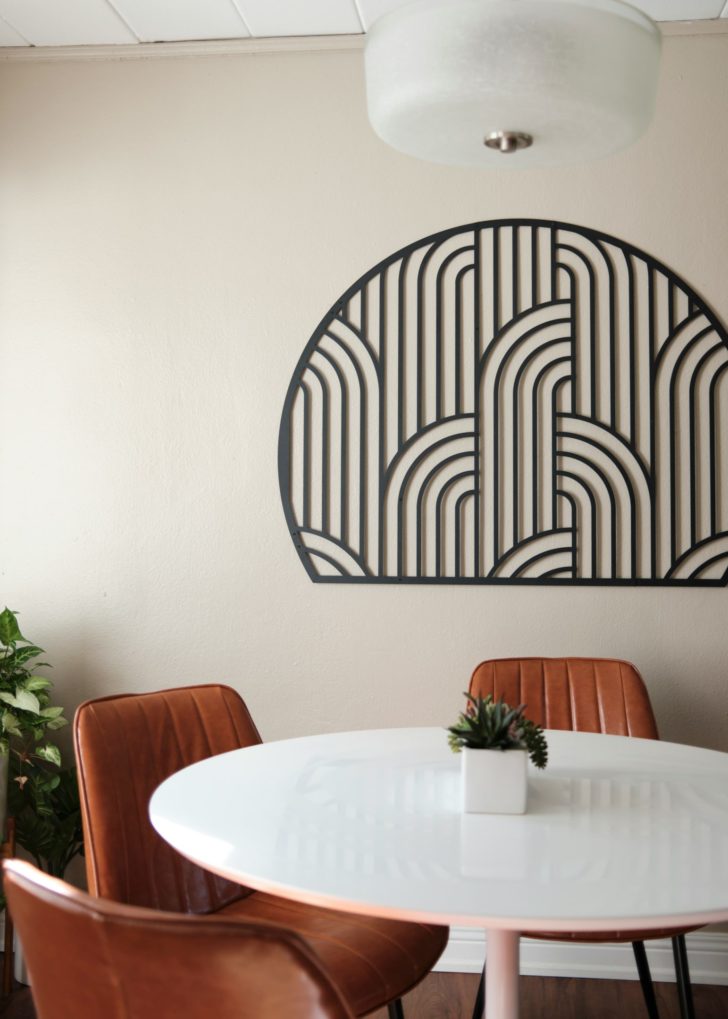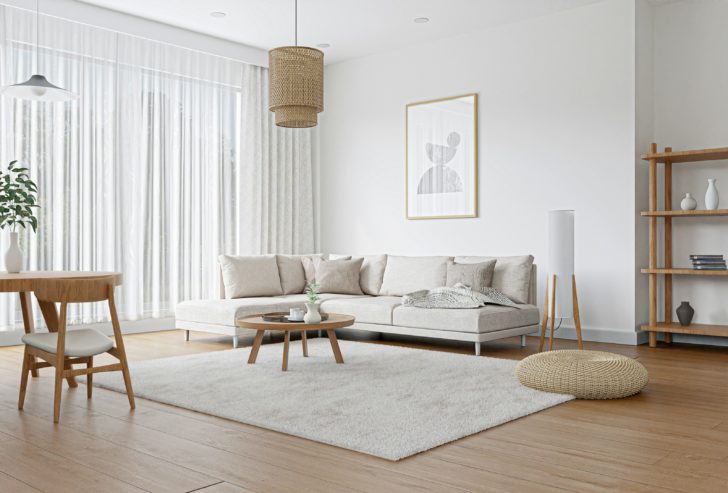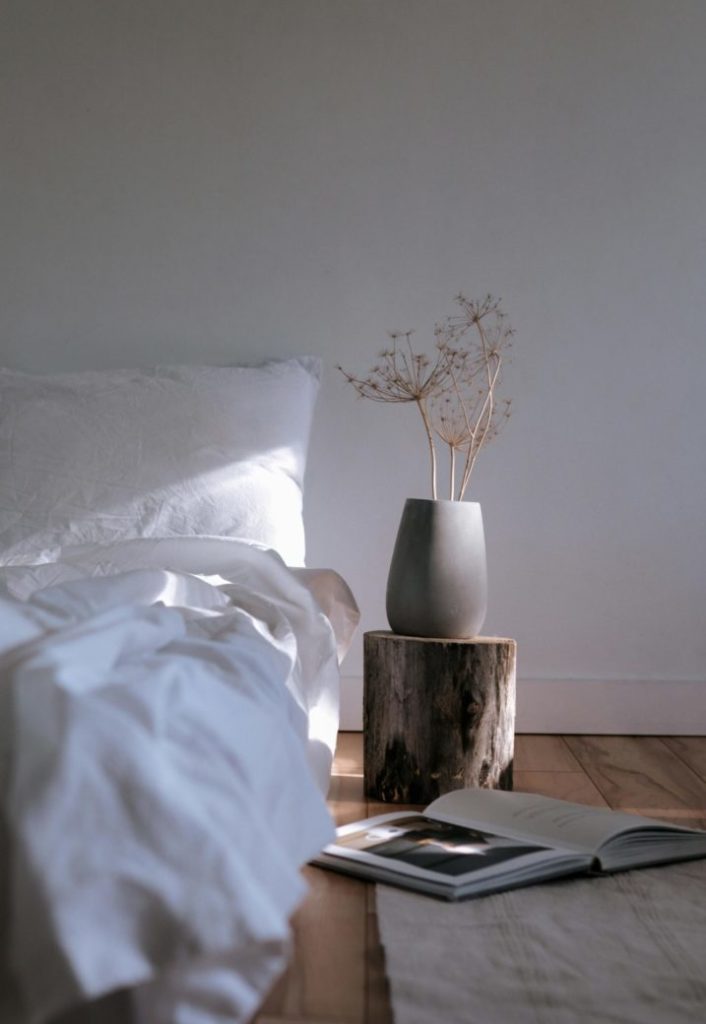Welcome to the captivating world of Japandi style, a unique fusion of Japanese and Scandinavian design principles that creates harmonious, functional, and inviting living spaces. Discover the philosophy behind this innovative design style, explore its key components, and learn how to create your own Japandi haven at home.
Table of Contents
Key Takeaways
Create a tranquil and timeless atmosphere in your home with Japandi style, combining the best of Japanese and Scandinavian design.
Utilize neutral colors, clean lines & geometric forms, natural materials & craftsmanship to create an inviting space.
Enjoy benefits like sustainability, eco-friendliness & a timeless aesthetic when adopting this beautiful design trend!
Embracing Japandi: A Blend of Japanese and Scandinavian Design

Japandi style masterfully combines the best of japanese and scandinavian styles, forming an aesthetic that is both timeless and elegant. With its emphasis on simplicity, natural elements, and comfort, Japandi design offers a fresh approach to interior style that transcends trends. Imagine a space where the warmth and coziness of Scandinavian design meet the rustic minimalism of Japanese interiors, resulting in an atmosphere of serenity and sophistication.
This captivating design style marries sumptuous textures and patterns with bold Scandinavian furniture styles, infusing the Japanese interiors with cheerfulness and a visually interesting contrast. Brands like String Shelving and creations by Danish designers perfectly capture the spirit of Scandinavian design, making it easy to incorporate these elements into your Japandi space, which is inspired by Scandinavian interior design.
The Philosophy Behind Japandi Style
Japandi style’s uplifting philosophy deeply embeds minimalism, functionality, and the appreciation of beauty in its imperfections. Drawing from both Scandinavian hygge and Japanese wabi-sabi concepts, Japandi design offers a refreshing take on interior styling that celebrates simplicity and connection to nature.
Japandi design is enriched by its Japanese influence, which perfectly melds functionality, simplicity, and efficient use of space, complementing the Scandinavian design aesthetics. This harmonious fusion originated from the mutual admiration for minimalism and natural materials in both Japanese design and Scandinavian cultures, resulting in a truly unique interior style.
Key Components of Japandi Design
Three key components underpin Japandi design: neutral color schemes, clean lines and geometric forms, and the employment of natural materials and craftsmanship. These elements work together to create a calming and inviting atmosphere, making Japandi spaces a perfect retreat from the hustle and bustle of daily life.
Neutral Color Schemes

A neutral color palette, featuring earth tones, whites, and muted shades, contributes significantly to the timeless look of Japandi design. By using a simple yet captivating color palette, Japandi spaces evoke a sense of tranquility and balance. Some beautiful, neutral, muted tones recommended for Japandi spaces include:
Beige
Sand
Cream
Taupe
Oatmeal
Stone
These colors create a calm and soothing atmosphere in Japandi spaces.
To bring a heightened level of visual interest, consider adding a contrasting color to your Japandi space. This can be achieved through vibrant pops of color in accessories, artwork, or textiles, adding a touch of excitement to the otherwise muted tones.
Clean Lines and Geometric Forms
In Japandi design, clean lines and simple geometric forms are vital, imparting a timeless elegance to furniture and decor. By combining contrasting shapes and textures, Japandi spaces achieve a captivating visual interest that draws the eye and adds depth to the overall design.
Incorporating contrast in Japandi design can be achieved through creative means, such as textured pillows or blankets. These elements can effectively break up sharp lines in furniture, further enhancing the natural aesthetic and adding a touch of visual intrigue to the space.
Natural Materials and Craftsmanship
Japandi design relies heavily on natural materials and craftsmanship, highlighting sustainable, eco-friendly materials and handmade pieces for a unique look. Japandi interior design utilizes natural materials extensively – such as natural fibers, furniture made from organic components, and delightful handmade pottery. These details amplify the beauty and coziness of this home decor trend..
The focus on sustainable, eco-friendly materials and handmade pieces in Japandi design promotes a positive environmental impact, making it an excellent choice for those looking to create a beautiful space with a minimal ecological footprint. Cool metals are also used in Japandi design to add an exciting visual element and further enhance the natural aesthetic.
Designing Your Japandi Space
Crafting a Japandi space requires:
Focus on decluttering and organization
Selection of furniture and decor in line with the style’s principles
Infusion of nature indoors via plants and natural materials
By embracing these Japanese interior design elements, you can transform your space into a serene and inviting Japandi haven.
Decluttering and Organization
In Japandi design, decluttering and organization play a crucial role, fostering a sense of calm and purpose in the space. By keeping your space organized and clutter-free, you allow for a feeling of serenity and purposefulness to flourish.
Organizing items into categories and storing them in designated areas can be fun and rewarding. Utilizing baskets, bins, and shelves to keep items organized and out of sight can be a great way to create a beautiful and organized space.
Maximizing storage by utilizing vertical space can also be a great way to make the most of your space.
Selecting Furniture and Decor
In your selection of furniture and decor for your Japandi space, seek out pieces that reflect the design principles of simplicity, natural materials, and timeless design. Some examples include:
The Juni Coffee Table, which is a stunning example of Japandi-style furniture
Pieces made from light or medium-toned woods like oak, birch, or maple
Handwoven furniture pieces
Furniture made from natural fibers like wicker, rattan, bamboo
Jute rugs
These pieces are perfect for creating a Japandi-inspired space.
Incorporating the key elements of Japandi aesthetic includes:
Clean lines
Stylish minimalism
Organic materials
Eye-catching colors
Functional minimal furniture
Lush plants
These elements will further enhance the Japandi aesthetic.
Incorporating Nature Indoors
Bringing nature indoors via plants, natural materials, and organic textures forms a crucial part of Japandi design. This approach creates a tranquil and inviting atmosphere, allowing you to feel connected to nature even while indoors, with the help of natural light.
Some beautiful types of plants that are often used in Japandi interior design include:
Bonsai
Kokedama
Maple tree
Japanese aralia
Peace lily
Rhipsalis paradox
Kentia palm
These plants not only add to the overall aesthetic but also promote a sense of calm and relaxation in the space.
Japandi Style in Outdoor Living Spaces
Outdoor living spaces can also adopt the Japandi style, utilizing similar design principles and incorporating elements such as Japanese-style lamps and Scandinavian furniture. By embracing Japandi design in your outdoor space, you can create a harmonious and inviting atmosphere that perfectly complements your indoor living area.
To bring the essence of Japandi design outdoors, consider:
Using neutral colors and earth tones for a calming atmosphere
Incorporating clean lines and open spaces to promote a sense of harmony
Embracing natural materials and elements to create a connection to nature
The Benefits of Adopting Japandi Design

The numerous benefits of adopting Japandi design make it an excellent choice for those seeking to transform their living space. One of the most significant advantages is the serene and calming atmosphere it creates, allowing you to enjoy a tranquil retreat from daily life.
Another notable benefit of Japandi design is its focus on sustainability and eco-friendliness. By emphasizing the use of natural materials, sustainable practices, and handmade pieces, Japandi design promotes a positive environmental impact while creating spaces that are both beautiful and functional.
Lastly, Japandi design creates a timeless aesthetic that transcends trends. By embracing its core principles of simplicity, minimalism, and the use of natural materials, Japandi spaces remain stylish and relevant for years to come, making it an excellent investment in your home’s design.
Check out 5 Reasons to Embrace Japandi Aesthetics in Your Home.
Summary
In conclusion, Japandi style offers a unique and captivating fusion of Japanese and Scandinavian design principles, creating harmonious and functional living spaces that emphasize simplicity, natural elements, and comfort. By embracing the philosophy behind Japandi design, incorporating its key components, and applying these principles to your indoor and outdoor spaces, you can create a serene and inviting haven that transcends trends and promotes sustainability. Embrace the beauty of Japandi design and transform your living space into a timeless sanctuary.
Frequently Asked Questions
What is the concept of Japandi?
Japandi combines the best of both worlds, drawing from Japanese philosophy’s wabi-sabi and Scandinavian hygge to create a warm and cozy lifestyle. It celebrates slow living, contentment, comfort and wellbeing.
What is modern Japandi style?
Japandi style is the perfect blend of Japanese and Scandinavian influences, combining wabi-sabi philosophy with hygge comfort and warmth. It is an East meets West design movement that embraces slow-living, contentment, simplicity, cosiness and wellbeing.
How to create a Japandi style?
To create a Japandi style, opt for simple, pared-back designs and natural materials. Use muted colours, minimal furnishings and keep accessories to a minimum for the best effect. With less clutter, you can create a free-flowing space that embodies this trend.
What are the benefits of adopting Japandi design?
Japandi design offers a tranquil atmosphere, sustainability focus and a timeless look, making it a great choice for creating a beautiful home.









